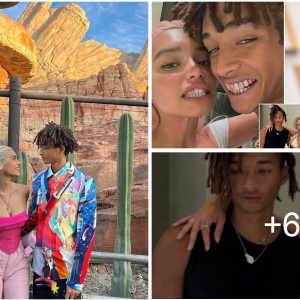
The inland taipan is generally considered the most venomous snake in the world, with a single bite enough to kill 100 adult humans in an hour. In addition to the impressive toxicity of its venom, the enzyme hyaluronidase accelerates the rate at which the victim’s body absorbs the venom. The neurotoxins, procoagulants and myotoxins in their venom can cause clots and bleeding in blood vessels, make breathing difficult, damage muscles and paralyze the nervous system.
Inland taipans are typically dark tan in color, ranging from light brownish green to deep dark brown, depending on the season. Slightly smaller than coastal taipans, these can grow to about 5.5 feet long.
Native to Australia, they are mainly found in the southern region of the country, Queensland, as well as the Northern Territory. The inland taipan is a solitary snake that prefers to live hidden, often in clay burrows previously dug by other animals.
Most active during the early morning and evening hours, this snake is very shy and prefers to avoid human contact. When encountered by people, inland taipans are not particularly aggressive, but they defend themselves by curling into a tight S shape before lunging to bite once or several times.
Their prey consists of small and medium-sized mammals, primary rodents such as the long-haired rat, the plains rat, and the house mouse. Foraging and sunbathing is how these snakes spend most of their time.
Curious facts about the interior of Taipan:
- Part of the reason inland taipans change color throughout the seasons is thermoregulation, allowing them to absorb more light in the colder months.
- The potency of their venom, more than their temperament, earned them the nickname “fierce snake.”
2. Cobra real (Ophiophagus hannah)

What makes King Cobras so unique is not the strength of their venom, but the amount of venom they can inject into their victims. Each bite delivers approximately 7 milliliters of venom, and three or four bites in quick succession are common when the snake attacks. The neurotoxins found in the venom paralyze their prey and eventually prevent breathing, creating a 50% mortality rate for untreated bites in humans.
King cobras are usually dark brown or olive in color, with white or pale yellow cross bands on the body. This snake holds the record for the longest venomous snake in the world, commonly reaching three to four meters in length, but capable of measuring up to 18 feet in length.
These snakes are native to forested areas of Asia, with notable populations in southern China, northern India, Indonesia, the Malay Peninsula, and the Philippines. They generally prefer to live in areas near forest streams, agricultural spaces and trees.
Like most snakes, King Cobras are shy and avoid confrontation; However, when provoked, they can become incredibly aggressive. When they feel threatened, cobras often raise their heads off the ground up to a third of their total length and widen the “hood” or skin around the head to appear larger and more intimidating.
King cobras generally prefer to eat other snakes, even venomous ones, but will eat lizards, rodents, and birds when food is scarce. When not hunting or defending
They, themselves, are surprisingly affectionate with their young. Female king cobras are dedicated and affectionate, unlike most snakes, they build a nest and care for their eggs until they hatch.
King Cobra Fun Facts:
- Unlike most snakes, king cobras are monogamous and only mate with one partner throughout their lives.
- King Cobras have such a slow metabolism that after a large meal, they can survive for months without needing to eat again.
3. Mamba negra (Dendroaspis polylepis)

Black mambas are famous for being the most venomous snake in their range, Africa. Because its extremely toxic venom causes systemic paralysis,
People who are bitten should receive antivenin treatment as soon as possible to have a chance of survival. Their venom is said to be so potent that just two drops are enough to kill an average adult human, and as adults, black mambas can store up to 20 drops in each tusk.
Instead of their body color, which can be olive green, yellowish brown, khaki, or bronze, they get their name from the color on the inside of their mouth. Black mambas measure between 6.5 and 8 feet long, with a maximum length of 14 feet from head to tail.
Black mambas inhabit vast areas of hills, dry bushland and forests in sub-Saharan African countries. Unfortunately, much of this land has a large human population, so incidents can occur frequently.
Ethiopia, Tanzania, Uganda and the Democratic Republic of the Congo are particularly dangerous areas as black mambas will attack with repeated bites.
when provoked or cornered. While they prefer to avoid humans when possible, their self-defense is almost aggressive when necessary.
Black mambas prefer to eat small mammals and birds, but will eat other snakes if necessary. When not eating, these snakes are capable of traveling up to 12 miles per hour, which partly explains why they are so dangerous.
Curious facts about the black mamba:
- In the wild, a black mamba can live up to 11 years, but up to 20 years in captivity.
- Thanks to the impressive speed of 12 miles per hour that black mambas can travel, they can also kill the fastest ones.
4. Saw-scaled viper (Echis carinatus)

The saw-scaled viper is well known as the snake responsible for the most human deaths each year, largely due to a lack of readily available antivenom. Although their venom is lethal less than 10% of the time, their aggressive nature and habitability in well-populated areas mean they bite frequently and without hesitation.
Their scales are typically a mosaic of brown, tan, gray or orange with darker dorsal scales and lateral spots. Saw-scaled vipers are small snakes, usually between one and three feet long, with a stocky body and a pear-shaped head.
These vipers are generally found in dry, arid regions north of the equator, such as Africa, India, Sri Lanka, and Pakistan. Their color makes them well suited for camouflage in sandy areas, often completely covered except for the head.
Unlike some of the other snakes we have discussed, saw-scaled vipers are very irritable and aggressive and use a looped figure-8 as a defensive posture. Instead of hissing like other snakes, these snakes rub special serrated scales together to produce a sizzling sound.
Because they are nocturnal, saw-scaled vipers often hunt at night and prefer lizards, toads, and small birds. They also use their venom on their most intense prey, such as larger mammals, birds, other snakes, amphibians, and even scorpions.
Curious facts about the saw-scale viper:
- These snakes actually move sideways (lateral locomotion), unlike most snakes, which move by gliding forward.
- Saw-scaled vipers often climb trees and bushes to avoid inclement weather, such as rain.
5. Eastern tiger snake (Notechis scutatus)

This snake is known for its highly potent venom, which has neurotoxins, coagulants, myotoxins and hemolysins that create a 60% mortality rate in humans. If bitten by an Eastern tiger snake, the victim will suffer extreme pain, excessive sweating, difficulty breathing, numbness, body tingling, and paralysis.
These snakes can come in a variety of colors and sizes, including all shades of yellow, brown, even jet black, they usually have bands along their body. Tiger snakes can grow to a length of three to five feet long.
Native to the grasslands and mountains of southeastern Australia and coastal islands, eastern tiger snakes enjoy inhabiting streams, rivers and wetlands. Although they are terrestrial snakes, they are great climbers and excellent swimmers.
These snakes prefer to avoid humans if possible and can become aggressive when scared. They usually prefer to sneak rather than fight, but they stand up, hiss loudly, and inflate their body as defensive maneuvers. If they fail and the snake feels threatened, they will attack.
Eastern tiger snakes live primarily on frogs, but also eat fish, birds, other reptiles, and small mammals. They are also known to eat carrion when other foods are not available.
Eastern Tiger Snake Fun Fact:
- These snakes are skilled swimmers, capable of hunting in water and can even stay underwater for up to nine minutes at a time.
- Instead of laying eggs like most snakes, eastern tiger snakes give birth to live young.










